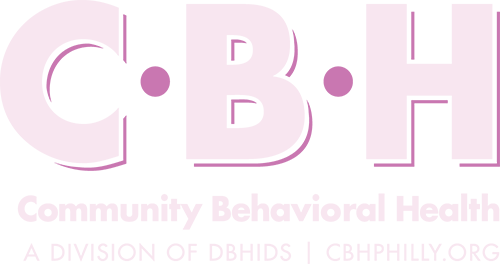Technology-Based Services
Telehealth
CBH supports telehealth services as a valuable adjunct to on-site services for behavioral health providers. Telehealth is defined by CBH as assessment, therapy, and medication management services provided via telecommunications technology that allows for face-to-face interactions (e.g., videoconferencing). All providers considering the use of telehealth must adhere to the requirements of the Office of Mental Health and Substance Abuse Services (OMHSAS).
OMHSAS defines tele-behavioral health as:
(i) The use of interactive audio and video communication to provide clinical services at a distance using technology that conforms to industry-wide standards and is in compliance with state and federal privacy and security laws.
(ii) Tele-behavioral health does not include telephone conversation, electronic mail message, or facsimile transmission between a psychiatrist or an advanced practice professional and an individual receiving services, or a consultation between two health care practitioners, although these activities may support the delivery of tele-behavioral health.
In addition to meeting OMHSAS guidelines for telehealth, CBH requires the following of telehealth providers:
- Prior approval from OMHSAS before implementation and billing
- An on-site psychiatrist, as telehealth must supplement, not replace, on-site psychiatry and oversight
- Availability of a mental health professional (MHP) to participate in telehealth sessions, preferably the member’s primary therapist, to ensure care coordination and appropriate crisis intervention
CBH may, after prior approval/review, reimburse telehealth for the following outpatient mental health services:
- Psychiatric evaluations
- Medication management
- Psychiatric consultations
- Individual therapy provided by a psychiatrist
- Collateral therapy provided by a psychiatrist
- Family/group therapy provided by a psychiatrist
Frequently Asked Questions Regarding Telehealth
Is it required for a parent or guardian to be present for a telehealth session if the child is under the age of 14?
A person over the age of 18 should be present to verify the encounter and provide support in case of an assessed safety risk. Teleconsultation is not treatment but a mode of delivering health care services. Therefore, health care services delivered via teleconsultation are held to the same standards of practice as in-person. PA Act 65 of 2020 (which supersedes Act 147 of 2004) is relevant for consent to treatment.
- Providers must assure the privacy of the individual receiving services and comply with (HIPAA) and other federal and state privacy and confidentiality requirements.
- Members receiving services have the right to be informed of all parties who will be present at each end of the telehealth appointment and have the right to request the removal of any person(s) that they do not wish to have present.
- The member receiving services has the right to have professionally trained mental health staff immediately available to them while they are receiving the telehealth service, to attend to emergencies or other needs.
- While the presence of another person raises the issue of confidentiality, certain psychiatric emergencies may require the presence of others if, for instance, an individual is experiencing suicidal or homicidal ideation, dissociative, or acute psychosis symptoms.
Is it required for a parent or guardian to be present for a telehealth session if the child is between 14-17 years old?
While it is desirable for parents or guardians to be involved in a child’s healthcare, youth aged 14-17 can consent to behavioral health care services independently. The involvement of others in the treatment of youth at this age range would require the consent of the identified member and is highly recommended to support the developmental needs of adolescents.
Interested in Telehealth Services?
If your organization is interested in implementing telehealth, please review the OMHSAS Behavioral Health Telehealth Information webpage and contact your provider representative for further information.
Have additional questions or resources to share? Please contact CBH to help us understand your needs by completing this submission form.
E-Prescribing
CBH supports e-prescribing as a tool to promote safe and efficient prescribing for our members. As indicated by the Centers for Medicaid and Medicare Services (CMS), e-prescribing allows prescribers to send accurate, error-free, and understandable prescriptions directly to a pharmacy; it is an important element in improving the quality of member care and reducing medication errors.
Additional benefits may include:
- Automated clinical decision making
E-Prescribing prompts prescribers to completely fill out the dose, route, strength, and frequency. - Increased efficiency in the medication reconciliation process through notification of allergies, drug interactions, duplicate therapies, and other clinical alerts
Physicians can obtain information regarding an individual’s documented allergies and previously and currently prescribed drugs; they will receive clinical alerts if a newly prescribed drug has the potential for negative reactions or interactions. - Tracks individual fulfillment of prescriptions
Unlike handwritten prescriptions, e-prescribing allows physicians to verify whether individuals fill prescriptions. - Reduces the number of lost prescriptions
E-Prescribing eliminates the possibility of lost paper prescriptions.






